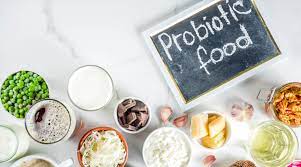Revitalizing Your Gut Health: Embracing the Irresistible World of Probiotic Powerhouse Foods and Supplements
Consuming live microbes, known as probiotics, has been shown to improve health. Probiotic bacteria have several significant advantages for the body and brain thus, strengthening the heart, enhancing the digestive system, boosting skin appearance, and lowering depression.
One other common method of obtaining probiotics is by supplementation; however, fermented foods are also a good source. Here is a list of super healthy probiotic powerhouse sources and why you should embrace the world of probiotics.
Yogurt
One of the greatest foods to consume for probiotics that promote wellness is yogurt. Lactic acid and bifidobacteria, two types of helpful bacteria, ferment milk to produce yogurt. Yogurt consumption has been associated with numerous health advantages, such as better blood pressure regulation and bone health. Yogurt eating in children may help lessen diarrhea and irritable bowel syndrome symptoms (IBS).
Yogurt is also a good option for people who cannot tolerate lactose. This is the reason yogurt tastes sour—part of the lactose gets converted to lactic acid by bacteria during fermentation. However, consumers need to know that not all yogurts are made with active probiotics. Beneficial microorganisms may occasionally be eliminated during processing.
Kefir
Kefir is a recipe for fermented milk beverages. Made by blending goat or cow milk with kefir seeds. Kefir seeds are cauliflower-shaped granules that are cultivated using yeast and lactic acid bacteria rather than grains.
Studies have demonstrated the potential health benefits of kefir, including enhanced bone health, relief from digestive issues, and immunity against infections. Like yogurt, kefir has many primary strains of beneficial bacteria and yeast, making it a great option for those who are lactose intolerant.
Supplements
Probiotics are frequently ingested through fermented foods or supplements. Supplements are scientifically designed probiotics that improve digestive health, reduce depression, and promote heart health. There are those that boost immunity to promote lung structure, function, gut health, and immune system health, such as the clinically validated ResBiotic Lung support which is a proprietary blend of clinically validated probiotic strains and traditional herbs.
Supplements, just like probiotic foods, are efficient in promoting public health since they are good carriers of beneficial bacteria. There are various kinds of strains of live microbes that have their individual effects, hence, the need to find the probiotic for your specific health benefit that you require.
Pickles
Chopped sauerkraut that has undergone lactic acid bacterial fermentation is called sauerkraut. It is a widely consumed traditional dish from many nations, particularly in Europe, and is among the oldest. It is common to serve sauerkraut as a side dish.
This food tastes sour and salty, and if kept in an airtight container, it keeps for several months. Sauerkraut has a high probiotic content and is high in fiber, vitamins C, B, and K, salt, iron, and manganese. The antioxidants lutein and zeaxanthin, which are critical for eye health, are also included in this meal.
Tempeh Soy
A product of fermented soybeans is tempeh. Formed into solid covers with a flavor akin to that of mushrooms or chestnuts. Although it comes from Indonesia, tempeh has become well-known all across the world as a high-protein substitute for meat. Healthy nutrients are added to this food as a result of the fermentation process.
Phytic acid is a plant component found in soybeans that hinders the absorption of minerals, including zinc and iron. On the other hand, fermentation lowers phytic acid, which may enhance the body’s absorption of nutrients from tempeh. Tempeh has an abundance of vitamins from fermentation as well. Conversely, the majority of vitamin B12 is exclusively present in animal-based foods, including dairy, eggs, fish, and meat.
Kimbap melon
A spicy, fermented Korean meal is called kimchi. Typically, the primary component of this dish is cabbage. Other vegetables, such as radish, seaweed, or bean sprouts, can also be used to make kimchi. A mixture of spices, including red peppers, garlic, ginger, scallions, and salt, is used to make kimchi.
In addition to other lactic acid bacteria that might be good for digestive health, kimchi contains the lactic acid bacteria Lactobacillus. Iron, riboflavin (vitamin B2), vitamin K, and other vitamins and minerals are abundant in cabbage-based kimchi.
Natto
The fermented soybean dish known as natto is a famous meal in Japan. It is made with the super probiotic Bacillus subtilis, which has been shown to benefit cardiovascular health, strengthen the immune system, and improve the absorption of vitamin K2.
Along with being high in protein and having a potent anti-inflammatory enzyme called nattokinase, natto has been shown to reduce blood clotting, earning it a top spot on the list of foods high in probiotics.
Key Takeaway
Certain foods are infused with live, healthy yeasts and bacteria that are produced during the fermentation process. Fermented foods include a wide range of probiotics in terms of both kind and quantity. It’s crucial to verify on food labels whether a product actually contains probiotics. One way to prevent any digestive issues that greater doses of probiotics may produce is to gradually incorporate more probiotic items into the diet.




































No comments